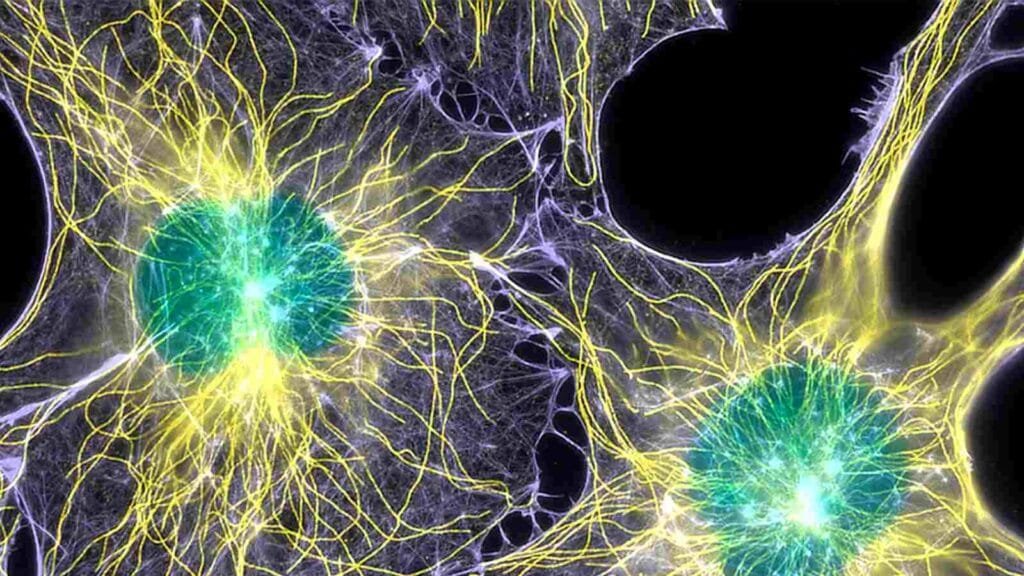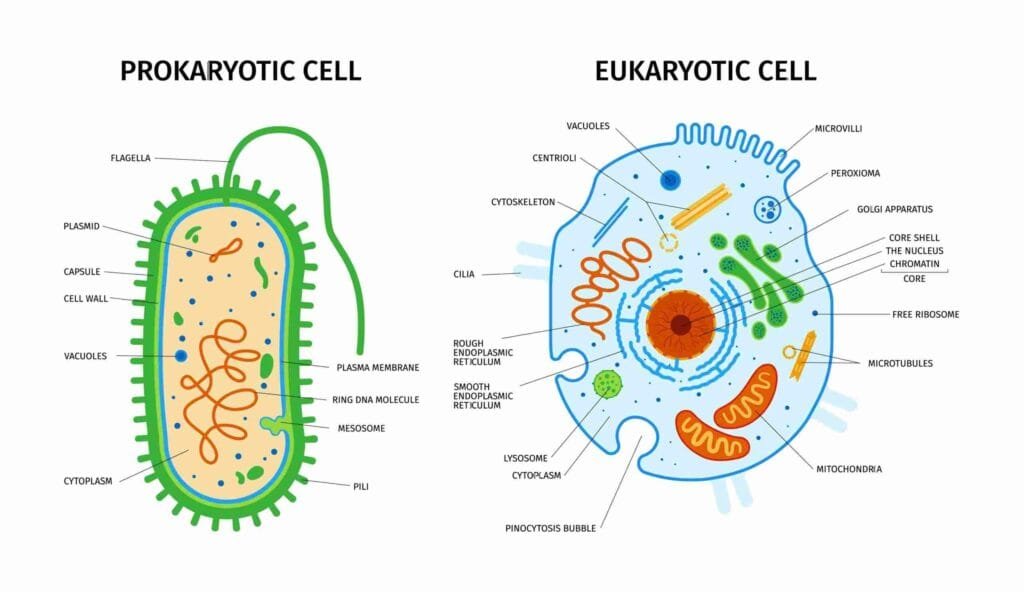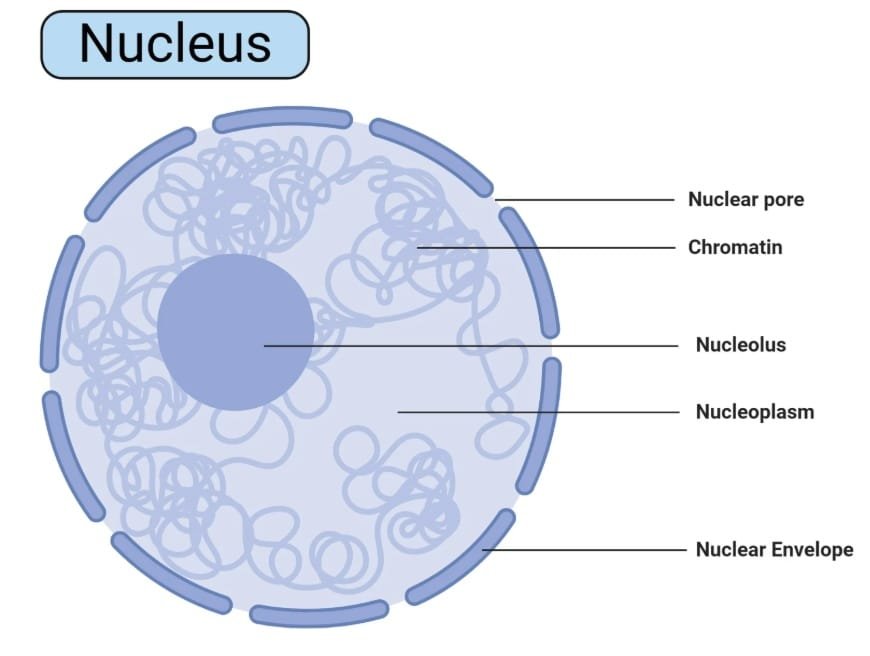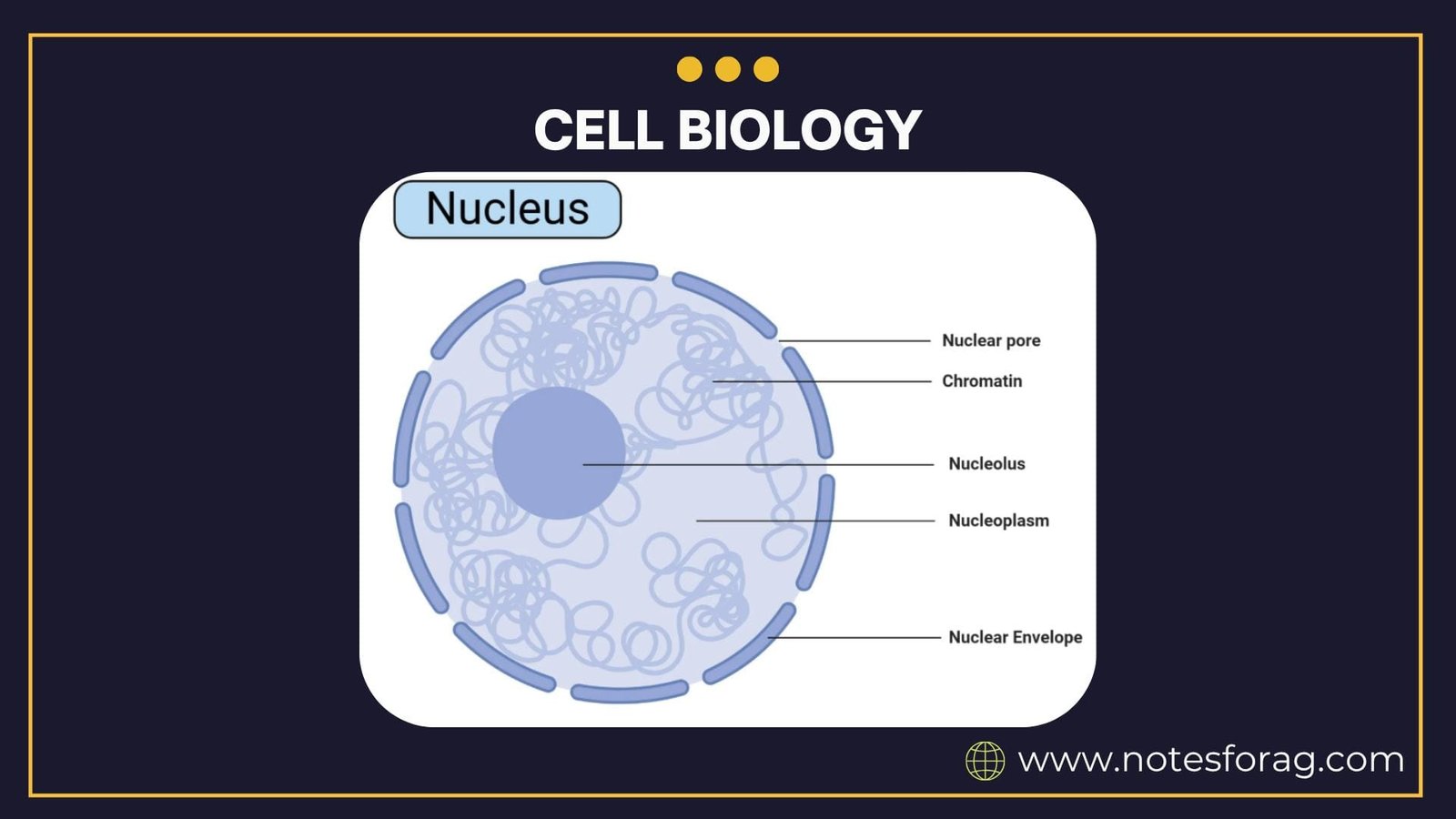INTRODUCTION: Cell Biology
Cell biology is a branch of biology that deals with the study of cells, which are the smallest units of life. Everything that lives from tiny bacteria to large plants and animals is made up of cells. Cells carry out essential activities like producing energy, removing waste, growing, and reproducing. Understanding how cells work helps scientists make progress in medicine, agriculture, genetics, and many other fields.
DEFINITION OF CELL BIOLOGY

Cell biology, also known as cytology, is the study of cells, including their structure, functions, parts, interactions, life processes, and how they die. This area of science shows us how all living organisms function and survive, starting at the cellular level.
Table of Contents
1. HISTORY OF CELL BIOLOGY
The study of cell biology began in the 1600s with the invention of the microscope. In 1665, Robert Hooke observed cork under a microscope and called the tiny units he saw “cells.” Antonie van Leeuwenhoek improved the microscope and was the first to see living cells like bacteria. Later, scientists Matthias Schleiden and Theodor Schwann created the cell theory in the 1800s, which became a major step in biology.
In the 20th century, with the development of advanced microscopes such as the electron microscope, scientists began to understand the finer details of cell structures. Techniques like cell staining, fluorescence microscopy, and molecular tagging allowed even more insights. Today, cell biology integrates molecular biology, genetics, and biochemistry, forming the foundation for advanced fields like stem cell research and genetic engineering.
2. CELL THEORY
Cell theory is a set of basic rules about cells:
- All living things are made of one or more cells.
- The cell is the smallest unit that can carry out all life processes.
- All cells come from existing cells.
This theory is a foundation of biology and helps explain how life works at the cellular level. It laid the groundwork for understanding diseases, growth, heredity, and organism development.
3. TYPES OF CELLS

3.1 Prokaryotic Cells
Prokaryotic cells are the simplest types of cells. They don’t have a nucleus or any membrane-covered parts inside. Their DNA floats freely in the cell. Bacteria and archaea are examples of organisms made of prokaryotic cells. These cells usually reproduce by a simple process called binary fission.
Prokaryotic cells have a simpler organization. The absence of organelles makes their processes more direct, but also limits their functionality. They are adapted to survive in extreme environments and often reproduce quickly. Their small size allows for rapid nutrient uptake and response to environmental changes.
3.2 Eukaryotic Cells
Eukaryotic cells are more complex and have a nucleus that holds the cell’s DNA. These cells also contain many organelles (small structures that do specific jobs). Plants, animals, fungi, and protists are made of eukaryotic cells. These cells divide by mitosis or meiosis, depending on the situation.
These cells have evolved specialized compartments for carrying out metabolic functions, providing them greater efficiency and organization. Their internal structures are enclosed within membranes, allowing simultaneous reactions to occur in different compartments. Eukaryotic cells support multicellularity and division of labor among tissues and organs.
4. CELL STRUCTURE AND ORGANELLES
Cells have many different parts that work together to keep the cell alive and functioning. These parts are called organelles.
4.1 Plasma Membrane
This is the outer boundary of the cell. It controls what goes in and out, like nutrients and waste. It’s made of a double layer of fats and proteins. It also helps the cell communicate with its environment.
The plasma membrane also helps in cell recognition and signaling. It contains proteins that act as receptors, channels, and transporters that manage the movement of substances across the membrane. Specialized structures like glycoproteins help in immune response and intercellular communication.
4.2 Cytoplasm
The jelly-like substance inside the cell where organelles float. It supports all internal organelles and allows materials to move easily within the cell.
It provides a medium for chemical reactions and helps maintain the cell’s shape. Many enzymes found in the cytoplasm are essential for metabolic pathways. It also assists in cell expansion and the positioning of organelles.
4.3 Nucleus

The control center of the cell. It holds DNA, which tells the cell what to do and when to divide. The nucleus is surrounded by a special membrane with holes that allow exchange with the rest of the cell.
The nucleolus, found inside the nucleus, produces ribosomes. The nuclear envelope has nuclear pores that regulate the passage of molecules between the nucleus and cytoplasm. The nucleus also plays a vital role in gene expression and cellular response to external signals.
4.4 Mitochondria
These are the energy producers of the cell. They take in food and turn it into energy (ATP) that the cell can use. They even have their own DNA and are often called the powerhouse of the cell.
They play a role in apoptosis (programmed cell death) and help regulate cellular metabolism. Mitochondrial DNA is inherited maternally and is used in genetic studies. Mitochondria are also involved in calcium signaling and heat production in brown fat cells.
4.5 Endoplasmic Reticulum (ER)
Rough ER: Has ribosomes on its surface and helps in making and folding proteins that will be sent out of the cell or used in the membrane.
Smooth ER: Has no ribosomes and helps in making fats (lipids), detoxifying chemicals, and storing calcium.
Rough ER is connected to the nuclear membrane and is essential for producing membrane-bound and secretory proteins. Smooth ER helps synthesize steroid hormones and plays a role in muscle contraction. It also assists in the detoxification of drugs and harmful substances in liver cells.
4.6 Golgi Apparatus
This organelle looks like a stack of pancakes. It modifies, packs, and ships proteins and other materials to their destination inside or outside the cell.
The Golgi also produces lysosomes and is involved in glycosylation, a process where sugars are added to proteins and lipids to form glycoproteins and glycolipids. It acts like a post office, sorting and labeling products for their final destination.
4.7 Ribosomes
These tiny structures make proteins. They can float freely in the cytoplasm or attach to the rough ER.
Ribosomes read genetic instructions from mRNA and build proteins from amino acids. Free ribosomes make proteins for use inside the cell, while ER-bound ribosomes make proteins for export. Ribosomes are essential for cell growth, repair, and enzyme production.
4.8 Lysosomes
These are the cleaning crew of the cell. They break down waste, old cell parts, and harmful invaders using enzymes.
They play a key role in autophagy, the process of digesting cell components. Malfunctioning lysosomes can lead to diseases like Tay-Sachs. Lysosomes maintain cellular health by recycling cellular components and preventing buildup of toxic material.
4.9 Peroxisomes
They help break down fatty acids and get rid of toxic chemicals using enzymes. They also protect the cell from oxidative damage.
Peroxisomes carry out beta-oxidation of fatty acids and neutralize hydrogen peroxide by converting it to water with the help of catalase enzyme. They also assist in lipid metabolism and the synthesis of bile acids in liver cells.
4.10 Vacuoles
Storage bubbles in the cell. Plant cells have large vacuoles to store water, while animal cells have smaller ones for storing nutrients and waste.
In plants, vacuoles also help maintain turgor pressure, which keeps the plant upright. They store important substances such as ions, sugars, and pigments. In animal cells, vacuoles may help in waste disposal and digestion.
4.11 Cytoskeleton
A network of protein threads that help the cell keep its shape, support movement of materials, and allow the entire cell to move when necessary.
It includes microtubules, microfilaments, and intermediate filaments that provide mechanical support and help in intracellular transport. The cytoskeleton is also vital during cell division for organizing chromosomes and constructing the mitotic spindle.
4.12 Centrosomes and Centrioles
These help organize microtubules (part of the cytoskeleton) and are important for organizing the spindle fibers during cell division, especially in animal cells.
Centrioles come in pairs and play a key role in the formation of cilia and flagella. They assist in maintaining the cell’s polarity and directionality during division.
4.13 Cell Wall (in plants)
A tough outer layer found only in plant cells. It gives shape and strength to the cell and protects it from mechanical stress.
It is mainly made of cellulose, hemicellulose, and pectin. The cell wall also prevents excessive water intake. It acts as a structural support system and a barrier against pathogens.
4.14 Chloroplasts (in plants)
These organelles capture sunlight and turn it into food using photosynthesis. They contain a green pigment called chlorophyll that helps in this process.
Chloroplasts have their own DNA and are believed to have evolved from ancient photosynthetic bacteria through endosymbiosis. They are central to the plant’s energy cycle and are involved in producing oxygen as a by-product of photosynthesis.
CONCLUSION
Cell biology is a fundamental branch of biology that explores the structure, function, and behavior of cells, which are the basic building blocks of all living organisms. Understanding cells from the simplest prokaryotic forms to the more complex eukaryotic types provides essential insights into how life functions at the most basic level. The discovery and development of cell theory have shaped modern biology by establishing that all living organisms are composed of cells, that the cell is the smallest unit of life, and that new cells arise from existing cells. These principles form the foundation for research and applications across numerous fields including medicine, genetics, agriculture, and biotechnology.
The detailed study of cellular structures, or organelles, reveals a complex and highly organized system where each part has a specific role. The plasma membrane controls what enters and leaves the cell, maintaining balance and communication with the environment. The cytoplasm acts as the medium for vital chemical reactions, while the nucleus stores genetic information and controls cellular activities. Energy production is driven by mitochondria, and protein synthesis is carried out by ribosomes and the endoplasmic reticulum. Organelles like the Golgi apparatus, lysosomes, and peroxisomes manage packaging, waste breakdown, and detoxification, ensuring cell health and efficiency.
Plant cells have additional unique structures such as the rigid cell wall that provides support, and chloroplasts that capture light energy for photosynthesis. Vacuoles maintain water balance and storage functions in plant cells, contributing to their shape and growth. The cytoskeleton and centrosomes provide structural integrity and assist in cell division.
In summary, the intricate architecture and functions of cells enable life to thrive in diverse forms and environments. Knowledge of cell biology not only advances scientific understanding but also drives innovations that improve health, food security, and environmental sustainability. As research progresses, cell biology continues to be a cornerstone of biological sciences with ever-expanding applications.
Frequently Asked Questions (FAQs)
What is cell biology?
Cell biology is the branch of science that studies cells, which are the basic building blocks of all living things. It looks at how cells are made, what parts they have, and how they work together to keep organisms alive.
What are the main types of cells?
There are two main types of cells: prokaryotic and eukaryotic. Prokaryotic cells are simple and don’t have a nucleus; their DNA floats freely inside. Eukaryotic cells are more complex and have a defined nucleus that holds the DNA. They also have many specialized parts called organelles.
What is the function of the plasma membrane?
The plasma membrane is like a protective skin around the cell. It controls what can enter or leave the cell, such as nutrients coming in and waste going out.
Related Articles

